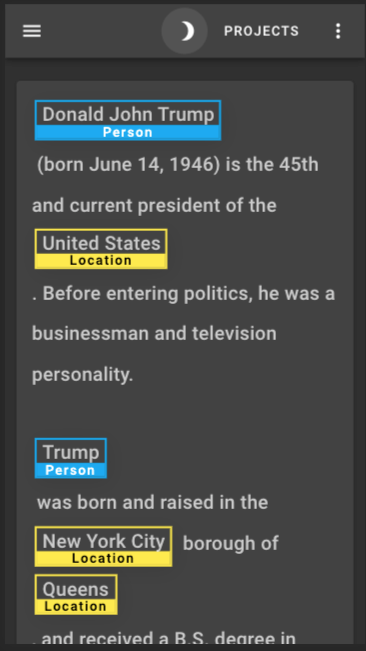doccano v1.0.0 Release Notes
Release Date: 2019-11-15 // over 4 years ago-
Major Features and Improvements
⚡️ Doccano 1.0.0 focuses on simplicity and supporting mobile devices, featuring updates like:
- 👌 Supporting mobile devices.
- 🚀 Easy deployment in a production environment on any platform.
- Code simplification to reduce hacktivation energy.
Highlights
- 💻 doccano 1.0.0 uses Vuetify as a Vue.js UI component framework. Vuetify provides a variety of material components such as button, card, menu, table, for immediate implementation and intuitive code.
- 🚀 Easy deployment to a production environment: doccano 1.0.0 users will be able to use the docker-compose.prod.yml to deploy the application. It is composed of several containers such as Web(Nginx), application(Gunicorn + Django), database management system(PostgreSQL). The architecture improves stability, reliability, performance of doccano.
- Frontend codes clean-up, included removing large components, instead, create many small components and use them to create a page.
- 👍 Dark mode support: doccano 1.0.0 users will be able to use the dark mode. Generally speaking, it takes quiet time to annotate dataset. As a result, our eyes are tired. By using dark mode, our eyes will be less tired. Friendly to eyes!

- 💻 Mobile device support: Supporting mobile devices is important because a lot of people in the world don't have their own personal computer but probably they have a smartphone. By supporting mobile devices and those people, it will become easier to utilize crowdsourcing, as a result, we will be able to improve our workflow.

- 💻 UI/UX improvement in a sequence labeling task: doccano 1.0.0 users will be able to identify labels in a sequence labeling task with not only their colors but also their label names. This change will be especially useful in the case of many labels(more than 10 labels). In addition, users can change annotated labels. This change will be useful in the case of you use machine learning models to annotate texts, then you modify the annotated labels manually.